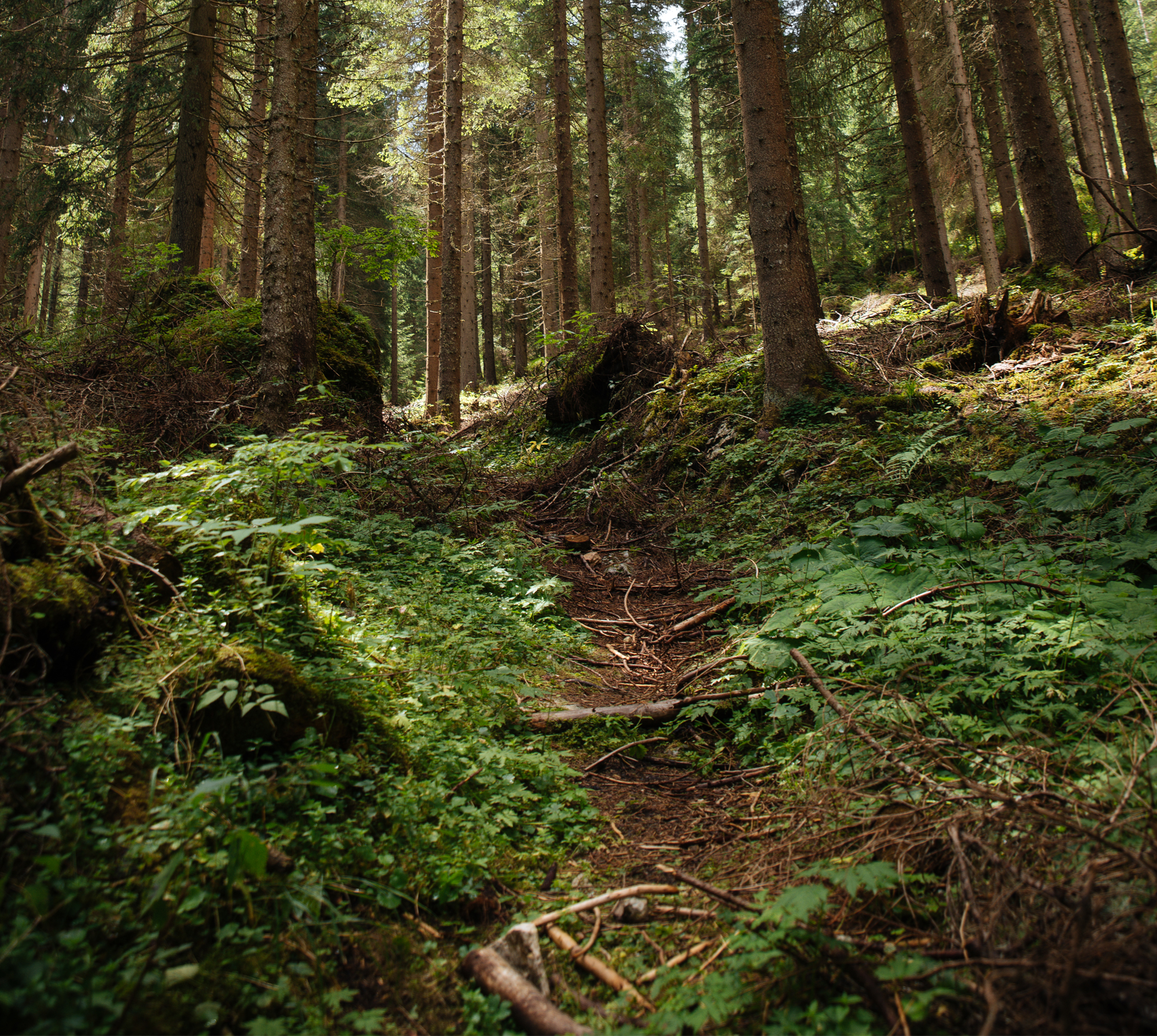
Zmiany leśnych zbiorowisk roślinnych w obszarze źródliskowym Tetyńskiej Strugi na Pojezierzu Myśliborskim w ostatnich dekadach (1976–2023)
Changes in forest plant communities in the headwaters of the Tetyńska Struga stream in the Myślibórz Lake District during the last decades (1976–2023)
Autorzy
-
Aleksander Smoliga
Regionalna Dyrekcja Lasów Państwowych w Szczecinie
ul. Słowackiego 2, 71-434 Szczecin
Adres do korespondencji – Przylesie 15, 70-872 Szczecin
*Tel. +48 570 003 541, e-mail: aleksander.smoliga@szczecin.lasy.gov.pl
Abstrakt
The aim of this study was to describe the changes in the structure and species composition of forest communities in the Myślibórz Lake District caused by forest management and natural factors. For this purpose, data from phytosociological relevés from the 1960s and 1970s were compared with data collected in the area between 2021 and 2023. A total of 128 relevés were car-ried out at the sites where the forest phytocoenoses had been described several decades earlier. In addition, a dead wood inventory was carried out on 40 circular study plots (0.25 ha). A significant increase in the proportion of common beech (Fagus sylvatica), which has been promoted by forest management in recent decades, was observed in the study area. Another tree species whose share in the forest communities has changed significantly is common hornbeam (Carpinus betulus). At present, hornbeam is mainly found in the undergrowth. In the past, it formed a complex structure of tree stands together with pedunculate oak (Quercus robur) and other deciduous tree species. Common bird cherry (Padus avium) is currently gradually re-placing ash (Fraxinus excelsior) in the riparian forests. Changes can also be observed in the herb layer. Species that are characteris-tic of individual phytocoenoses are generally less abundant today than they were in the last century. Some species, such as small-balsam (Impatiens parviflora) and water foxtail (Alopecurus geniculatus), did not occur in this area in the past. The undergrowth of the tree layer has changed the most, while the herb layer has changed the least. The forest communities of the Myślibórz Lake Dis-trict, especially riparian forests, oak-lime-hornbeam forests and beech forests, have changed considerably in recent decades, mainly due to forest management activities. The largest amount of dead wood has been documented in the riparian forests of this area.
Słowa kluczowe
| DOI | 10.48538/lpb-2024-0011 |
|---|---|
| Source | Leśne Prace Badawcze / Forest Research Papers, 2024, Vol. 84: 109–117 |
| Print ISSN | |
| Online ISSN |
2082-8926 |
| Type of article |
Original research article |
| Original title |
Zmiany leśnych zbiorowisk roślinnych w obszarze źródliskowym Tetyńskiej Strugi na Pojezierzu Myśliborskim w ostatnich dekadach (1976–2023) |
| Publisher | © 2024 Author(s). This is an open access article licensed under the Creative Commons Attribution-NonCommercial-NoDerivs License (http://creativecommons.org/licenses/by-nc-nd/3.0/) |
| Date | December, 2024 |
- Gryz J., Krauze-Gryz D. Drobne ssaki Puszczy Pilickiej na podstawie analizy wypluwek puszczyka Strix aluco
- Hilszczański J. Chrząszcze saproksyliczne rezerwatu Stawy Raszyńskie, czyli o „reliktach lasu pierwotnego” w lesie miejskim
- Mandziuk A., Fornal-Pieniak B. Społeczne preferencje w zakresie wypoczynku w zależności od wyglądu lasu na przykładzie lasów miejskich Tarnowa
- Kowalczyk J., Bociek I. Zmienność obradzania szczepów na plantacji nasiennej modrzewia europejskiego (Larix decidua Mill.) w Sękocinie Starym
- Paradysz J., Kiec-Paradysz A. Skład pokarmu orlika krzykliwego Clanga pomarina na terenie Magurskiego Parku Narodowego
- Kubich J., Jasińska K., Gryz J., Krauze-Gryz D. Kuna domowa (Martes foina) na kampusie Szkoły Głównej Gospodarstwa Wiejskiego (SGGW) w Warszawie: sezonowe i dobowe wykorzystanie schronień antropogenicznych oraz skład pokarmu
- Gryz J., Krauze-Gryz D. Wpływ wielkoskalowego pożaru na skład pokarmu uszatki Asio otus
- Smoliga A. Zmiany leśnych zbiorowisk roślinnych w obszarze źródliskowym Tetyńskiej Strugi na Pojezierzu Myśliborskim w ostatnich dekadach (1976–2023)
- Ostasz E. Zbrodnia Pomorska 1939 roku w leśnych krajobrazach – problemy ochrony pamięci historycznej i zagospodarowania lasu
- Sołtykiewicz M., Gołos P., Wysocka-Fijorek E. Ekonomiczne konsekwencje zaburzeń w lasach – przegląd literatury
- Haidt A., Plewa R. Detekcja zapachu owadów z wykorzystaniem psów w leśnictwie – innowacyjna metoda monitoringu przyrodniczego
- Drobik P., Łukowski A., Baranowska M., Lewandowski P., Kowalkowski W. Restytucja jodły pospolitej w Sudetach – efekty środowiskowe, społeczne i ekonomiczne
- Wójcicki A. Sprawozdanie z seminarium naukowego pt. Inwentaryzacja wybranych elementów przyrodniczych w RDLP w Krośnie – podsumowanie
- Zawiła-Niedźwiecka A., Zawiła-Niedźwiecki J. Wspomnienie o śp. Profesorze Tomaszu Zawiła-Niedźwieckim (1954–2024)
- Skrzecz I. Twórczość naukowa prof. dr hab. Barbary Głowackiej – gdy pasja łączy się z pracą
- Czerepko J., Paluch R. Wspomnienie o prof. dr. hab. Aleksandrze Władysławie Sokołowskim (1932-2024)
- Gil W., Jastrzębowski S. Stanisław Tyszkiewicz (1904–1982). Wspomnienie w 120. rocznicę urodzin

